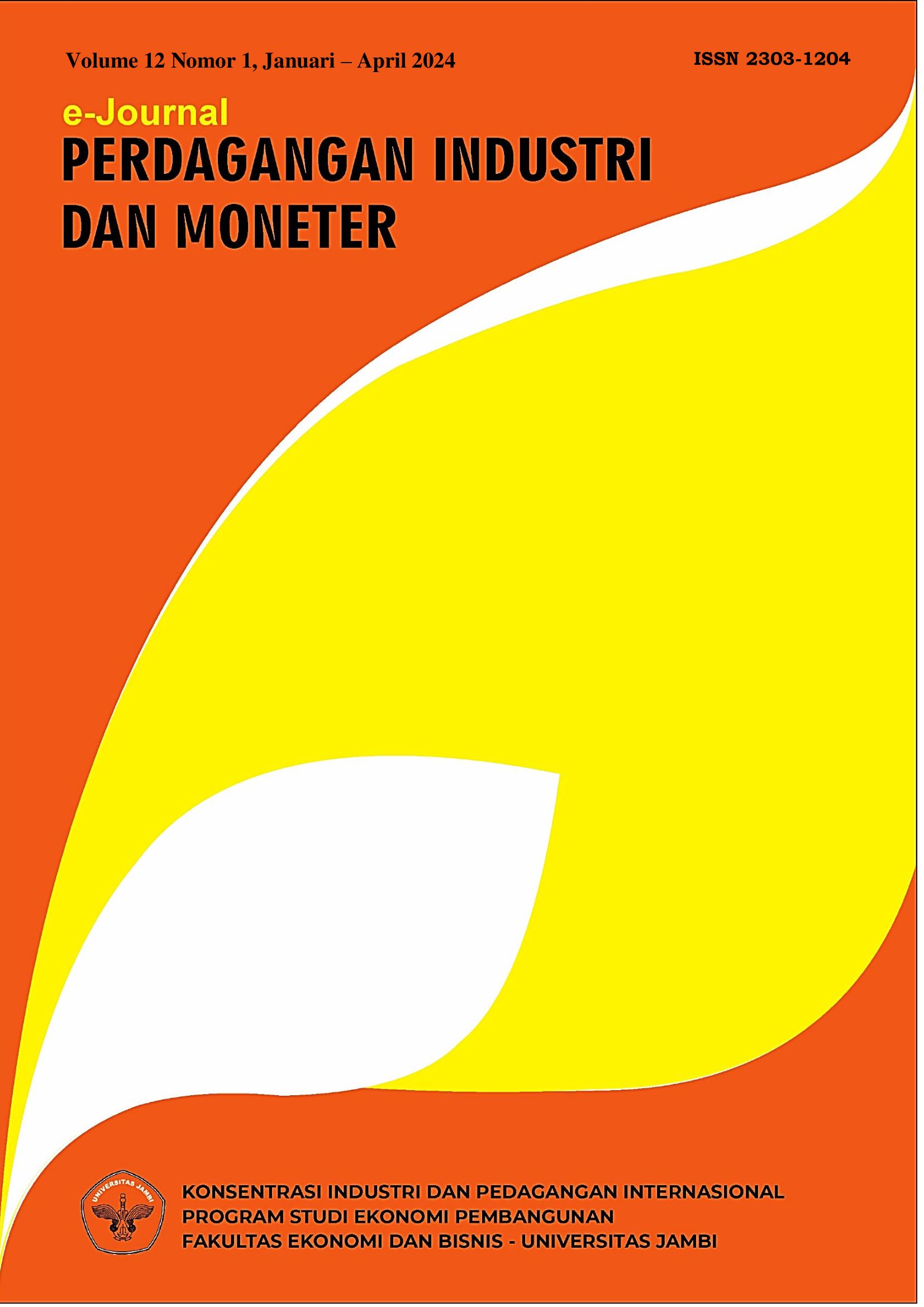Pengaruh penggunaan e-money, BI-rate dan jumlah uang beredar terhadap pertumbuhan ekonomi di Indonesia
Keywords:
economic growth, e-money, money supply, BI-RateAbstract
This research aims to determine and analyze the development of e-money, BI-rate, money supply and economic growth in Indonesia as well as to determine and analyze the influence of e-money, BI-rate and money supply on economic growth in Indonesia. The analytical method in this research is descriptive analysis and quantitative analysis. The quantitative analysis tool uses E-views with multiple linear regression methods. Based on the results and discussion using the multiple linear regression method, it is known that the Economic Growth variable experiences quite significant fluctuations every quarter and has an average development of 4.02%, the E-Money variable has an average development of 20.67%, the BI variable -Rate has an average development of 5.25%, and the money supply variable has an average development of 18.55%. Multiple linear regression shows the results that the E-Money and BI-Rate variables have a significant effect on the economic growth variable, while the Money Supply variable has no effect on the Economic Growth variable in Indonesia.
Downloads
References
Arifin. Z.(2023).Kebangkitan Bisnis UMKM Pasca Covid 19. PT. Sonpedia Publishing Indonesia: Jambi
Hastuti, D., Edhie Purnawan, M. ., & Sunargo, S. (2019). Pengaruh variabel-variabel di sektor riil dan perbankan terhadap Shock Credit Default Swap (CDS) di Indonesia . E-Journal Perdagangan Industri Dan Moneter, 7(3), 185 - 204. https://doi.org/10.22437/pim.v7i3.13071
Febrianty, H. (2019). Pengaruh sistem pembayaran non-tunai dalam era digital terhadap tingkat pertumbuhan ekonomi Indonesia. Badan Pusat Statistik. https://www.bps.go.id
Haryono, E. (2022). BI 7-day reverse repo rate tetap 5,75%: Sinergi menjaga stabilitas dan mendorong pertumbuhan. Bank Indonesia. https://www.bi.go.id
Ilmiah, J. (2021). Analisis transaksi pembayaran non-tunai terhadap pertumbuhan ekonomi di Indonesia.
Anggraini, J., & Sunoto, S. (2023). Money supply, exchange rate, and BI rate on economic growth in Indonesia. Jurnal Ekonomi, 12. http://ejournal.seaninstitute.or.id/index.php/ekonomi
Nugroho, A. (2022). Pengaruh kebijakan moneter dan fluktuasi harga komoditas terhadap pertumbuhan ekonomi Indonesia. Jurnal Ilmiah Indonesia, 07.
Prasasti, K. B., & Slamet, E. J. (2020). Pengaruh jumlah uang beredar terhadap inflasi dan suku bunga, serta terhadap investasi dan pertumbuhan ekonomi di Indonesia. Jurnal Ekonomi dan Bisnis Airlangga, 30(1). https://doi.org/10.20473/jeba. v30i1.2020.6249
Ramli, A. (2021). Pengaruh nilai tukar rupiah dan suku bunga terhadap pertumbuhan ekonomi melalui inflasi di Indonesia. Jurnal Ekonomi Indonesia.
Sari, R. P., Yunani, A., Studi, P., Ekonomi, I., Pembangunan, S., Ekonomi, F., Universitas, B., & Mangkurat, L. (2019). Produk domestik bruto (PDB) terhadap velositas di Indonesia. Jurnal Ilmiah Ekonomi Pembangunan, 2(1).
Susilawati, D., Dewi, Z., Putri, J., Ilmu, E., Fakultas, E., Universitas, N., Padang, J., Air, H., & Padang, T. (2019). Analisis pengaruh transaksi non-tunai dan suku bunga BI terhadap pertumbuhan ekonomi di Indonesia. Jurnal Ilmu Ekonomi.
Wicaksono, F. A., Huda, S., Pembangunan, U., Veteran, N., & Timur, J. (2023). Analisis pengaruh alat pembayaran menggunakan kartu (APMK), instrumen uang elektronik, dan Bank Indonesia-Real Time Gross Settlement (BI-RTGS) terhadap jumlah uang beredar. Jambura Economic Education Journal, 5(1).
Wijaya, A. P. (2021). Pengaruh penggunaan uang elektronik, jumlah uang beredar, dan inflasi terhadap pertumbuhan ekonomi. Jurnal Ekonomi dan Bisnis.
Downloads
Published
How to Cite
Issue
Section
License
Copyright (c) 2024 Novita Samnia Putri, Rahma Nurjanah, Nurhayani Nurhayani

This work is licensed under a Creative Commons Attribution-ShareAlike 4.0 International License.








